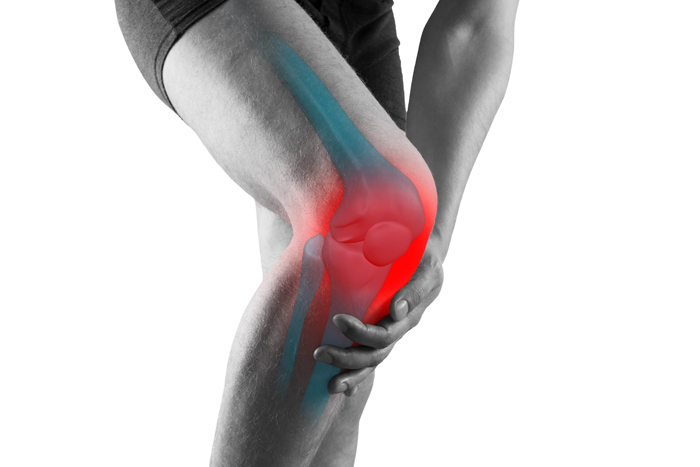Osteoarthritis Treatment & Diagnostics in Sadashiv Peth, Pune
Osteoarthritis
The most common type of arthritis that affects millions of individuals around the world is called osteoarthritis. When the protective cartilage that is responsible for cushioning the ends of bones breaks down over time, osteoarthritis occurs.
What is Osteoarthritis?
The meeting point of two bones is called a joint. The ends of bones are protected by cartilage, which is a type of connective tissue. Cartilage is responsible for reducing friction as well as act as a shock absorber. This cartilage breaks down in osteoarthritis, causing the bones of the joint to rub together. This can result in pain, stiffness, and other side effects.

What Are the Symptoms of Osteoarthritis?
Symptoms of osteoarthritis develop gradually and begin to worsen with time. These symptoms include -
- Stiffness - Individuals with osteoarthritis may experience stiffness in joints, especially upon waking up or after sitting or being inactive for some time.
- Losing flexibility - Individuals with osteoarthritis may also observe that they’re not able to move their joint through its full motion range.
- Bone spurs - Bone spurs are small bone fragments that may form around the joint affected with OA.
- Pain - The joint affected with OA hurts after or during movement.
- Tenderness - If you apply pressure on the affected joint or nearby area, you may feel tenderness.
- Scraping or grating sensation - While moving the affected joint, you may feel a scraping or grating sensation. You may also hear a crackling or popping sound.
- Swelling - There may be swelling around the affected joint, due to inflammation of tissues surrounding the joint.
What Are the Causes of Osteoarthritis?
Osteoarthritis develops when cartilage deteriorates over time, causing joint damage. If it wears down totally, bones start to rub against each other, leading to symptoms such as pain and stiffness. Osteoarthritis is considered a wear-and-tear condition because cartilage starts to wear away as we grow old. Osteoarthritis may also result due to dislocated joints, joint malformation, obesity, ligament tears, poor posture, or torn cartilage, leading to joint damage.
When to See a Doctor?
You should see a doctor regarding osteoarthritis if -
- You experience pain, stiffness, or tenderness in the affected joint, especially first thing in the morning upon waking up or after resting.
- Your joints are swollen after a long period of activity.
- You experience difficulty moving the affected joint, even while doing daily activities.
- You hear a popping or clicking sensation when you bend the affected joint.
- You are not able to move your joint to its full range of motion.
Request an appointment at Apollo Hospitals
Call 1860-500-2244 to book an appointment
What are the Risk Factors of Osteoarthritis?
Certain factors can increase the risk of osteoarthritis, such as -
- Gender - Women are more likely to get osteoarthritis as compared to men.
- Joint injury - Joint injuries such as injuries occurring during contact sports or due to an accident can contribute to osteoarthritis.
- Genetics - Some individuals are genetically prone to developing osteoarthritis.
- Metabolic conditions - Certain metabolic conditions such as diabetes or hemochromatosis can also increase the risk of osteoarthritis.
- Old age - As we grow old, the risk of osteoarthritis increases.
- Obesity - Being overweight or obese can contribute to the development of osteoarthritis in an individual, because the stress on weight-bearing joints is greater due to increased weight.
- Repetitive movement - The risk of osteoarthritis increases for individuals who are required to engage in repetitive motion such as while playing sports.
- Deformities - The risk of osteoarthritis is high in individuals who are born with defective cartilage or malformed joints.
How is Osteoarthritis Diagnosed?
To diagnose osteoarthritis, your doctor will ask you about your symptoms and review your medical history. They will also perform a physical exam wherein the affected joint will be checked for redness, tenderness, flexibility, and swelling. After this, your doctor may perform imaging tests such as X-rays and MRI as well as lab tests such as blood tests and joint fluid analysis.
How can We Treat Osteoarthritis?
The first line of treatment for osteoarthritis is non-surgical options, including -
- Medications such as NSAIDs, acetaminophen, and duloxetine
- Physical therapy, which includes exercises to strengthen muscles around the affected joint, to reduce pain and increase flexibility
- Surgery such as bone realignment or joint replacement
- Other procedures such as cortisone or lubrication injections
How Can We Prevent Osteoarthritis?
The risk of OA can be reduced with the following tips -
- Supporting your body by wearing the correct shoes and athletic supports
- A healthy and well-balanced diet
- Keeping a watch on your weight
- Getting adequate rest
Conclusion
Osteoarthritis cannot be cured, but with treatment and managing the condition, the outlook of this condition is positive for most individuals. If you experience symptoms of osteoarthritis, you should consult your doctor immediately so that you can begin treatment and get back to your daily life sooner.
Certain complications may arise due to osteoarthritis such as joint stiffness and pain, sleep disturbances, and depression.
To manage osteoarthritis, individuals can make certain lifestyle changes such as maintaining a healthy balanced diet, performing low-impact exercises regularly, and losing extra weight, if they are overweight or obese. They can also apply heat and cold to the affected joint, or use assistive devices such as canes or walkers.
Treatments
Our Top Specialities
NOTICE BOARD
CONTACT US
CONTACT US
 Book Appointment
Book Appointment


.svg)
.svg)
.svg)
.svg)








